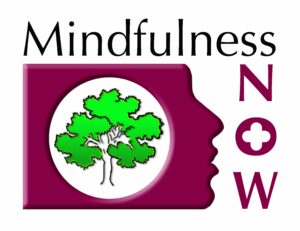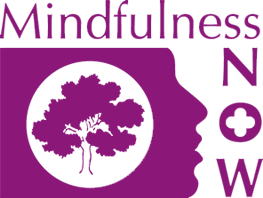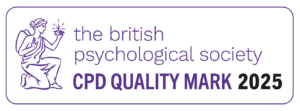Research News! Supporting New Study into the Mindfulness Now Programme
At Mindfulness Now, we are passionate about evidence-based practice and committed to constantly improving our programme through high-quality academic research. That’s why we’re thrilled to share news about a new research collaboration with the University of Lincoln.
This exciting project is being led by Poppy Ryan, from the the University of Lincoln, who is conducting an in-depth evaluation of the Mindfulness Now programme. Her research aims to explore how the programme impacts participants’ wellbeing – and your input could make a real difference.

What is Mindfulness?
Mindfulness is the practice of paying attention to the present moment with curiosity and compassion. It involves noticing your thoughts, emotions, and bodily sensations without judgment. Mindfulness has been widely studied in recent decades and is known to support improvements in stress reduction, emotional regulation, anxiety, depression, and overall mental wellbeing.
Learn more from Mindful.org
Explore the evidence: American Psychological Association – Mindfulness
What is the Mindfulness Now Programme?
The Mindfulness Now programme is a flexible, evidence-informed approach to mindfulness training. It incorporates practices from Mindfulness-Based Stress Reduction (MBSR) and Mindfulness-Based Cognitive Therapy (MBCT), and is used widely in therapeutic, educational, and workplace settings.
Delivered by accredited teachers and therapists, the Mindfulness Now programme helps individuals:
Reduce symptoms of anxiety and depression
Improve emotional regulation
Cultivate compassion and resilience
Navigate life’s challenges with greater clarity and calm

Find out more at mindfulnessnow.org.uk
Why is Research Important?
At Mindfulness Now, we believe that scientific research is essential to ensuring the effectiveness, relevance, and credibility of our work. Research helps us:
Validate our approach through robust, peer-reviewed evidence
Adapt and improve our programme based on real-world feedback
Support teacher development with insights from data
Contribute to the wider mindfulness field, helping to raise standards and support best practice
This is why we are proud to support research efforts like Poppy Ryan’s. Her findings will help shape the future of the Mindfulness Now programme and benefit everyone in our community – from new participants to experienced teachers.
Can You Help? Share Your Experience
If you’ve taken part in a Mindfulness Now programme, either individually or in a group, you’re invited to share your experience in Poppy’s research survey.
👉 Take part in the survey here:
https://unioflincoln.questionpro.eu/t/AB3u0gIZB3wEng
The survey includes questions on wellbeing, depression, anxiety, and stress – so please only participate if you feel comfortable. Your insights will remain anonymous and completely confidential.
Are You a Mindfulness Teacher?
If you’re a certified Mindfulness Now teacher who has run the programme with individuals or groups, we’d be so grateful if you could share this survey link with your participants:
🔗 https://unioflincoln.questionpro.eu/t/AB3u0gIZB3wEng
The survey includes questions about mental health and background information like age, gender, and neurodiversity (optional). It has been ethically approved by the University of Lincoln (UoL_2025_20259).
Thank You for Supporting Evidence-Based Mindfulness
Every response helps strengthen the Mindfulness Now programme and brings us closer to understanding the true impact of this work. We’re proud to stand alongside the University of Lincoln and continue our journey of compassion, curiosity, and improvement.
📩 For more updates on our research and training, follow us on Facebook, Instagram, or visit mindfulnessnow.org.uk.

Additional Resources on Mindfulness and Research
If you’d like to learn more about the science behind mindfulness and its benefits, here are some trusted resources and articles you might find valuable:
🧠 NHS – Mindfulness
https://www.nhs.uk/mental-health/self-help/tips-and-support/mindfulness/
An accessible introduction from the NHS, covering what mindfulness is and how it can help with stress, anxiety, and depression.
📘 The Mindfulness Initiative
https://www.themindfulnessinitiative.org
A policy institute working to bring mindfulness into public life – includes research summaries, policy briefs, and education resources.
📖 Oxford Mindfulness Foundation – Research Hub
https://www.oxfordmindfulness.org/research
Explore cutting-edge mindfulness research, including studies on MBCT and mindfulness in schools, workplaces, and healthcare.
📊 American Mindfulness Research Association (AMRA)
https://goamra.org
A comprehensive database of peer-reviewed mindfulness studies with regular research summaries and scientific updates.
🎓 University of Massachusetts – Center for Mindfulness
https://www.umassmed.edu/cfm
The birthplace of MBSR – includes educational content, research articles, and training opportunities.
🧩 Neuroscience of Mindfulness – Greater Good Science Center (UC Berkeley)
https://greatergood.berkeley.edu/topic/mindfulness/definition
Articles on how mindfulness changes the brain and supports emotional and cognitive health.












